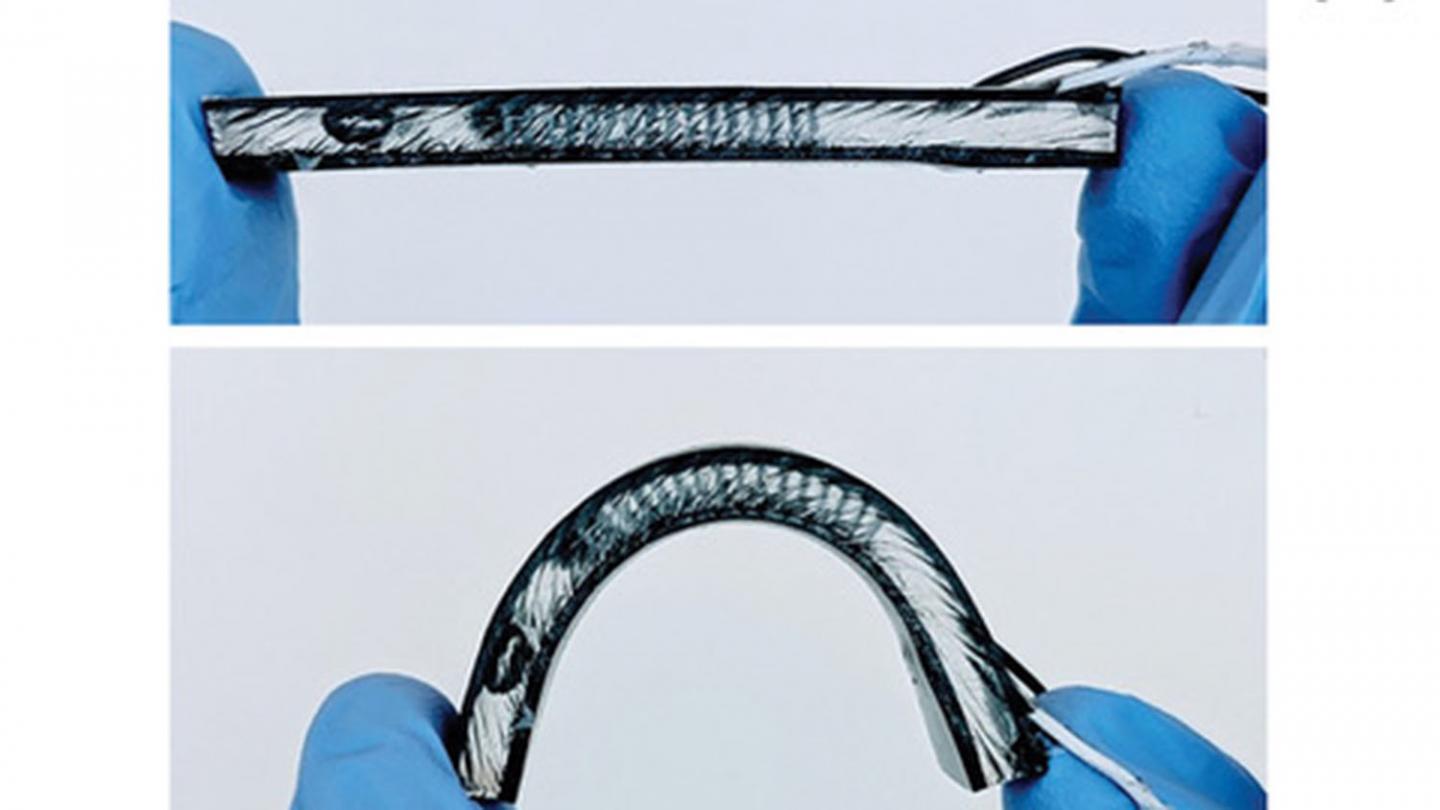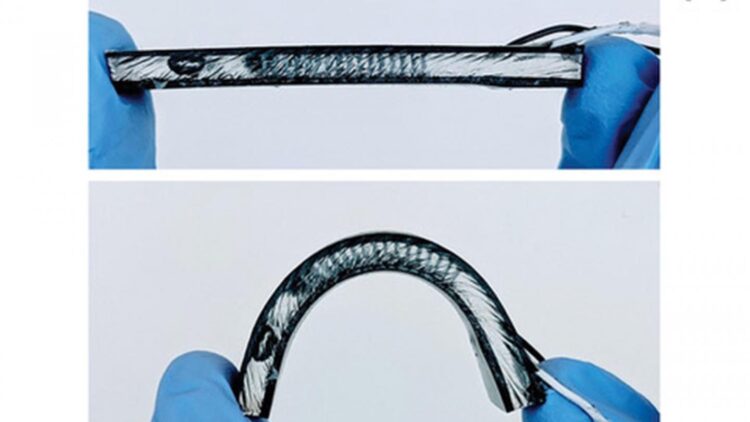
Credit: Photo courtesy of Mehmet Ozturk.
North Carolina State University engineers continue to improve the efficiency of a flexible device worn on the wrist that harvests heat energy from the human body to monitor health.
In a paper published in npj Flexible Electronics, the NC State researchers report significant enhancements in preventing heat leakage in the flexible body heat harvester they first reported in 2017 and updated in 2020. The harvesters use heat energy from the human body to power wearable technologies – think of smart watches that measure your heart rate, blood oxygen, glucose and other health parameters – that never need to have their batteries recharged. The technology relies on the same principles governing rigid thermoelectric harvesters that convert heat to electrical energy.
Flexible harvesters that conform to the human body are highly desired for use with wearable technologies. Mehmet Ozturk, an NC State professor of electrical and computer engineering and the corresponding author of the paper, mentioned superior skin contact with flexible devices, as well as the ergonomic and comfort considerations to the device wearer, as the core reasons behind building flexible thermoelectric generators, or TEGs.
The performance and efficiency of flexible harvesters, however, historically trail well behind rigid devices, which have been superior in their ability to convert body heat into usable energy.
The NC State proof-of-concept TEG originally reported in 2017 employed semiconductor elements that were connected electrically in series using liquid-metal interconnects made of EGaIn – a non-toxic alloy of gallium and indium. EGaIn provided both metal-like electrical conductivity and stretchability. The entire device was embedded in a stretchable silicone elastomer.
The upgraded device reported in 2020 employed the same architecture but significantly improved the thermal engineering of the previous version, while increasing the density of the semiconductor elements responsible for converting heat into electricity. One of the improvements was a high thermal conductivity silicone elastomer – essentially a type of rubber – that encapsulated the EGaIn interconnects.
The newest iteration adds aerogel flakes to the silicone elastomer to reduce the elastomer’s thermal conductivity. Experimental results showed that this innovation reduced the heat leakage through the elastomer by half.
“The addition of aerogel stops the heat from leaking between the device’s thermoelectric ‘legs,'” Ozturk said. “The higher the heat leakage, the lower the temperature that develops across the device, which translates to lower output power.
“The flexible device reported in this paper is performing an order of magnitude better than the device we reported in 2017 and continues to approach the performance of rigid devices,” Ozturk added.
Ozturk said that one of the strengths of the NC State-patented technology is that it employs the very same semiconductor elements used in rigid devices perfected after decades of research. The approach also provides a low-cost opportunity to existing rigid thermoelectric module manufacturers to enter the flexible thermoelectric market.
He added that his lab will continue to focus on improving the efficiency of these flexible devices.
###
NC State colleagues Viswanath P. Ramesh, Yasaman Sargolzaeiaval, Taylor V. Neumann, Veena Misra, Michael Dickey and Daryoosh Vashaee co-authored the paper.
Funding for the work comes from the NC State’s National Science Foundation-funded Advanced Self-Powered Systems of Integrated Sensors and Technologies (ASSIST) Center under grant EEC1160483. The mission of the ASSIST Center is to create self-powered wearables capable of long-term multi-modal sensing without having to replace or charge the batteries.
– kulikowski –
Additional Contact: Mick Kulikowski, News Services, 919/218-5937 or [email protected]
Note to editors: An abstract of the paper follows.
“Flexible Thermoelectric Generator with Liquid Metal Interconnects and Low Thermal Conductivity Silicone Filler”
Authors: Viswanath P. Ramesh, Yasaman Sargolzaeiaval, Taylor V. Neumann, Veena Misra, Daryoosh Vashaee, Michael D. Dickey and Mehmet C. Ozturk, North Carolina State University
Published: March 8, 2021, online in npj Flexible Electronics
DOI: 10.1038/s41528-021-00101-3
Abstract: Harvesting body heat using thermoelectricity provides a promising path to realizing self-powered, wearable electronics that can achieve continuous, long-term, uninterrupted health monitoring. This paper reports a flexible thermoelectric generator (TEG) that provides best-in-class performance in converting body heat to electrical energy. The device relies on a low thermal conductivity aerogel-silicone composite that secures and thermally isolates the individual semiconductor elements that are connected in series using stretchable eutectic gallium-indium (EGaIn) liquid metal interconnects. The composite consists of aerogel particulates mixed into polydimethylsiloxane (PDMS) providing as much as 50% reduction in the thermal conductivity of the silicone elastomer. Worn on the wrist, the flexible TEGs present output power density figures approaching 35μWcm-2 at an air velocity of 1.2 ms-1, equivalent to walking speed. The results suggest that these flexible TEGs can serve as the main energy source for low-power wearable electronics.
Media Contact
Mehmet Ozturk
[email protected]
Original Source
https:/
Related Journal Article
http://dx.





